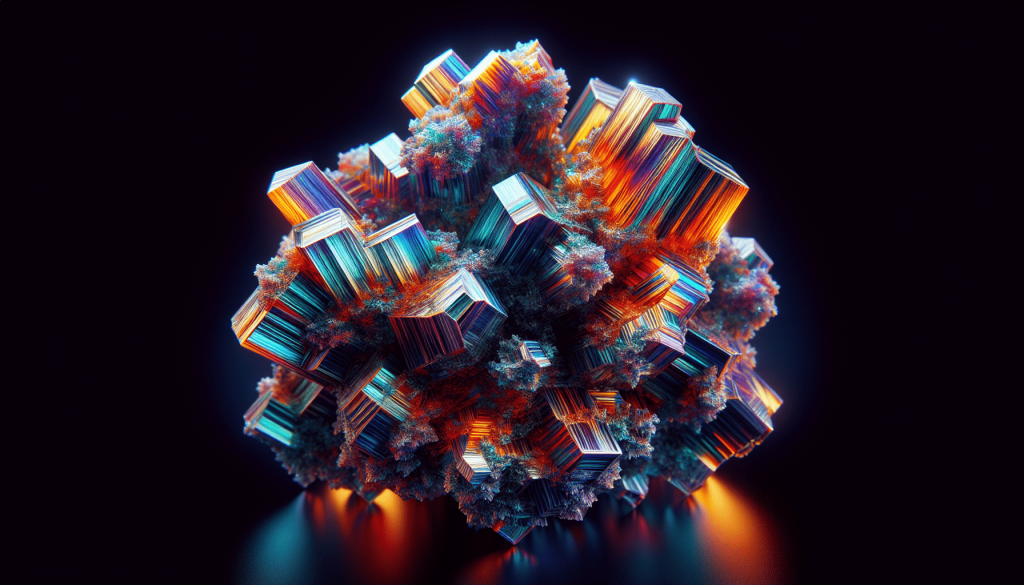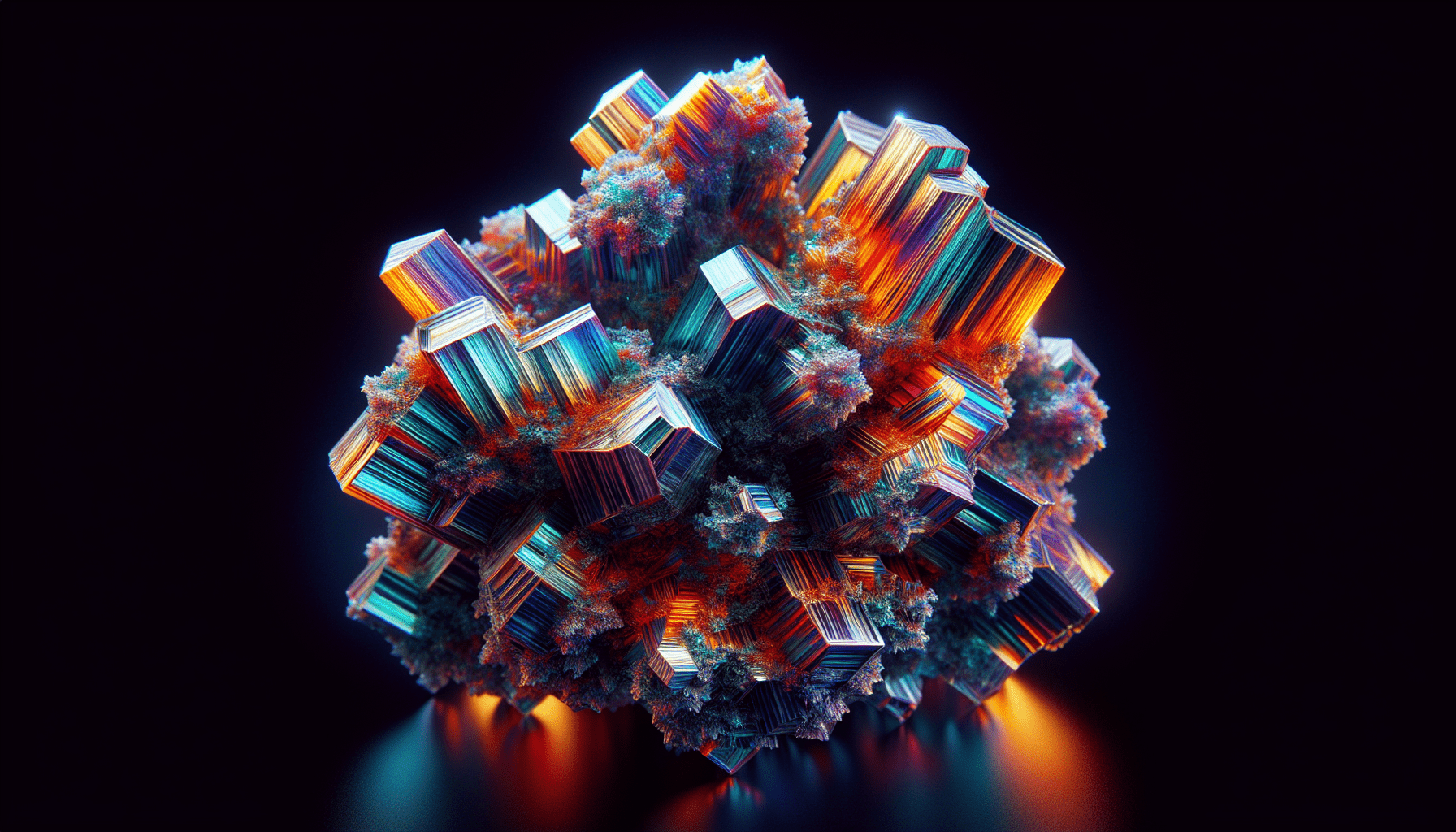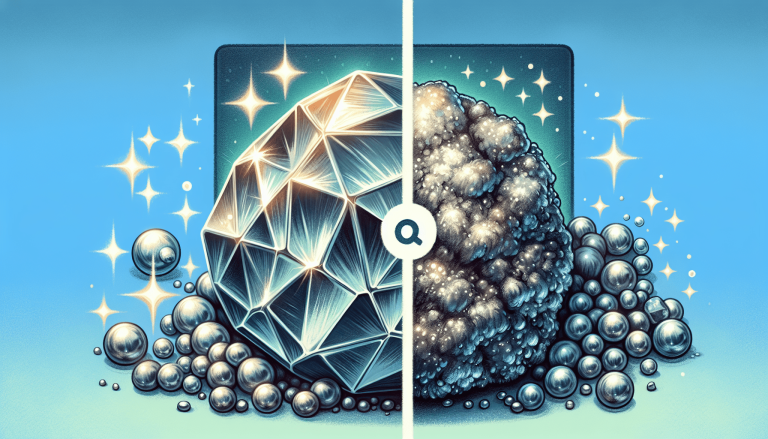What Are Some Unique Chemical Properties Of Rare Minerals?
So you’re curious about the fascinating world of rare minerals and their unique chemical properties? Well, get ready to be amazed, because in this article we’ll be exploring the extraordinary characteristics that set these precious gems apart from the ordinary. From their dazzling colors to their exceptional hardness, rare minerals possess a captivating allure that has captivated scientists and collectors alike. So if you’re ready to unlock the secrets of these extraordinary substances, buckle up and join us on this thrilling journey into the intriguing realm of rare minerals.

1. Crystal Structure
Lattice Arrangement
In rare minerals, the crystal structure refers to the arrangement of atoms or ions in a repeating pattern. This arrangement is known as the lattice. The lattice arrangement can vary significantly among different rare minerals, giving them distinct physical and chemical properties. It determines factors such as crystal shape, crystal habit, and symmetry.
Symmetry
Symmetry plays a crucial role in the crystal structure of rare minerals. Symmetry refers to the overall balance and regularity of the crystal lattice. Rare minerals often exhibit different types of symmetry, such as cubic, hexagonal, or monoclinic symmetry. This symmetry is reflected in the external shape of the crystal and can be observed through visual inspection.
Unit Cell
The unit cell is the fundamental building block of a crystal lattice. It is the smallest repeating unit that maintains the overall symmetry of the crystal structure. The shape of the unit cell and the arrangement of atoms within it determine the overall shape of the crystal. Rare minerals can have various types of unit cells, such as cubic, hexagonal, or tetragonal, depending on their crystal structure.
2. Cleavage and Fracture
Cleavage Planes
Cleavage is a property that describes how a mineral breaks along specific planes or directions. These cleavage planes are a result of the crystal structure and the arrangement of atoms within it. Rare minerals can exhibit different types of cleavage, such as basal, prismatic, or cubic cleavage. The number and orientation of cleavage planes influence the mineral’s physical properties and its ability to split or break along specific directions.
Fracture Types
Fracture is another property related to how a mineral breaks, but unlike cleavage, fracture does not occur along specific planes. Instead, fracture describes the texture or appearance of the broken surface. Rare minerals can display different types of fractures, including conchoidal, uneven, or fibrous fractures. These fracture types can provide valuable information about the mineral’s internal structure and its resistance to deformation.
3. Hardness
Mohs Scale
Hardness refers to a mineral’s resistance to scratching or abrasion. The Mohs scale of mineral hardness is commonly used to measure and compare the hardness of different minerals. Rare minerals can vary greatly in hardness, ranging from extremely soft to extremely hard. For example, diamond, one of the rarest minerals, has a hardness of 10 on the Mohs scale, while talc, another rare mineral, has a hardness of 1.
Indentation Hardness
Indentation hardness is another method used to measure a mineral’s resistance to deformation. It involves applying a known force or load to the surface of the mineral and measuring the resulting indentation. This measurement provides valuable information about the mineral’s mechanical properties and can help identify and characterize rare minerals based on their unique indentation hardness values.
4. Color
Trace Elements
The color of a rare mineral can be influenced by the presence of trace elements within its crystal lattice. Trace elements are impurities that are incorporated into the mineral during its formation process. These impurities can alter the electronic structure and energy levels of the mineral, resulting in the absorption or reflection of certain wavelengths of light. Consequently, different rare minerals can exhibit a wide range of colors due to variations in trace element composition.
Impurities
Impurities are substances that are not part of the mineral’s chemical composition but are present within its crystal lattice. These impurities can affect the color of the mineral by interacting with the incident light. Impurities can also contribute to the formation of unique color patterns or zoning within the mineral. The presence of impurities in rare minerals can often be visually observed and can help with their identification and classification.
Structural Defects
Structural defects can arise during the growth of a rare mineral and can influence its color. These defects can be classified into various types, such as point defects or line defects. Point defects involve the presence of vacant or substituted atoms, while line defects refer to dislocations or irregularities in the crystal lattice. These structural defects can result in color centers or color-changing phenomena, giving rare minerals their distinctive colors.

5. Luminescence
Fluorescence
Fluorescence is a phenomenon exhibited by some rare minerals where they emit visible light when exposed to ultraviolet (UV) radiation. This emission occurs due to the absorption of UV light, which excites electrons within the mineral’s crystal lattice. When these electrons return to their original states, they release energy in the form of visible light. Fluorescence can vary in intensity and color, providing a unique property for identifying and studying rare minerals.
Phosphorescence
Phosphorescence is a similar phenomenon to fluorescence but with a longer duration of light emission after the excitation source is removed. Rare minerals that exhibit phosphorescence continue to emit visible light for a period of time after exposure to UV radiation. This property can create stunning and long-lasting glow-in-the-dark effects, making these minerals highly valued for decorative purposes and scientific research.
Triboluminescence
Triboluminescence is a rare property observed in some minerals, where they emit light when subjected to mechanical stress or friction. When these minerals are scratched, crushed, or rubbed, they release energy in the form of visible light. The exact mechanism behind triboluminescence is not yet fully understood, but it is believed to involve the separation and recombination of electric charges within the crystal lattice. Rare minerals that exhibit this property can produce captivating light displays when subjected to mechanical action.
6. Optics
Refractive Index
The refractive index is a measure of how much light is bent or refracted when passing through a mineral. Rare minerals can have different refractive indices depending on their crystal structure and composition, which affects the speed of light within the material. By measuring the refractive index, one can determine the mineral’s optical properties and potentially identify it based on its unique refractive index value.
Birefringence
Birefringence, also known as double refraction, is a property exhibited by certain rare minerals where they split or polarize light into two different directions. This occurs due to variations in the refractive indices of the mineral along different crystallographic axes. Birefringence can result in the formation of colored interference patterns when viewed through a polarizing microscope. By analyzing these patterns, one can gain insights into the internal structure and optical properties of rare minerals.
Pleochroism
Pleochroism is a property observed in some rare minerals where they exhibit different colors when viewed from different angles. It arises from variations in absorption or transmission of light along different crystallographic directions. By rotating a mineral and observing the changes in color, one can determine its pleochroic nature. Pleochroism can be a useful tool in identifying and characterizing rare minerals, as it provides valuable optical information about their crystal structure and internal arrangement of atoms.
7. Magnetism
Paramagnetism
Paramagnetism is a property exhibited by certain rare minerals where they are weakly attracted to magnetic fields. This attraction is a result of unpaired electrons within the crystal lattice, which align themselves with the magnetic field when exposed to it. Although the magnetic effects are typically weak, paramagnetic rare minerals can be identified and distinguished by their response to a magnetic field, making them valuable for scientific research and industry applications.
Diamagnetism
Diamagnetism is the opposite of paramagnetism and refers to the property of being weakly repelled by magnetic fields. Unlike paramagnetic minerals, diamagnetic minerals do not have unpaired electrons and show a negative magnetic susceptibility. Although the diamagnetic effect is usually very weak, it can be observed in some rare minerals and provides important information about their electronic structure and magnetic properties.
Ferromagnetism
Ferromagnetism is a property observed in some rare minerals where they exhibit strong attraction and permanent magnetization even in the absence of an external magnetic field. This behavior arises from the alignment of magnetic moments of atoms within the crystal lattice. Ferromagnetic rare minerals can retain their magnetization over long periods, making them useful in various technological applications, such as magnetic data storage and magnetic sensors.
8. Electrical Conductivity
Conductors
Rare minerals can exhibit electrical conductivity, allowing the flow of electric current through their crystal lattice. Conductivity is dependent on factors such as the presence of free electrons or mobile ions within the mineral’s structure. Some rare minerals, such as native metals or certain sulfides, can possess high electrical conductivity due to the presence of free electrons. Their conductive properties enable them to be used in electrical and electronic devices.
Insulators
On the other end of the spectrum, rare minerals can also act as insulators, preventing the flow of electric current. Insulators have a large energy band gap, meaning that the electrons in the crystal lattice do not have enough energy to move freely and conduct electricity. Some rare minerals, particularly certain oxides or silicates, exhibit insulating properties due to their electronic structure and composition.
Semi-conductors
Semi-conductors are a group of rare minerals that possess properties between those of conductors and insulators. They have a smaller energy band gap than insulators, allowing electrons to move more freely, but not as freely as in conductors. This partial conductivity of semi-conductors can be modified by factors such as temperature or the presence of impurities. Rare minerals with semi-conductive properties are important in the field of electronics, as they form the basis of various electronic devices, including transistors and diodes.
9. Thermal Conductivity
High/Low Thermal Conductivity
Thermal conductivity refers to a mineral’s ability to conduct heat. Some rare minerals exhibit high thermal conductivity, meaning they can efficiently transfer heat through their crystal lattice. Minerals with high thermal conductivity are often used in applications where efficient heat transfer is required, such as in the construction of heat sinks or thermal management systems. Conversely, rare minerals with low thermal conductivity can provide insulation properties and are utilized in applications where heat retention is desired, such as insulation materials.
Thermal Expansion
Thermal expansion is the property of a mineral to expand or contract when subjected to changes in temperature. The atomic structure of rare minerals undergoes slight changes as temperature increases or decreases, leading to expansion or contraction. This property is essential in various fields, including material sciences and construction, where knowledge of thermal expansion helps in designing structures and materials that can withstand temperature variations without experiencing significant deformations or failures.
10. Chemical Reactivity
Oxidation
Oxidation is a chemical reaction that involves the loss of electrons by a mineral. Some rare minerals can undergo oxidation when exposed to air or other oxidizing agents. This chemical reactivity can result in the alteration of the mineral’s chemical composition, leading to the formation of new compounds or the release of gases. Oxidation is an important consideration when handling and storing rare minerals, as it can impact their stability, appearance, and overall integrity.
Acid/Base Reactions
Rare minerals can display varying degrees of reactivity when exposed to acids or bases. Acid/base reactions involve chemical reactions between the mineral and the acid or base, resulting in the formation of new compounds or the dissolution of the mineral. Different rare minerals exhibit different levels of resistance to acids or bases, depending on their composition and crystal structure. Acid/base reactivity can help identify and classify rare minerals, as well as play a role in the extraction and processing of these minerals.
Solubility
Solubility refers to the ability of a mineral to dissolve in a solvent. Rare minerals can exhibit different solubility properties, depending on their composition and crystal structure. Some rare minerals are highly soluble in certain solvents, while others may be insoluble. Solubility is an important consideration when studying rare minerals, as it can affect their stability, transport in natural systems, and potential uses in various applications, including pharmaceuticals and materials science.
In conclusion, the chemical properties of rare minerals encompass a wide range of characteristics that contribute to their uniqueness and desirability. Understanding these properties and their underlying principles allows scientists and enthusiasts to identify, categorize, and utilize rare minerals for various applications, ranging from scientific research to technological advancements. From their crystal structure to their optical, magnetic, electrical, and thermal properties, rare minerals continue to captivate our curiosity and pave the way for fascinating discoveries in the world of chemistry and materials science.







